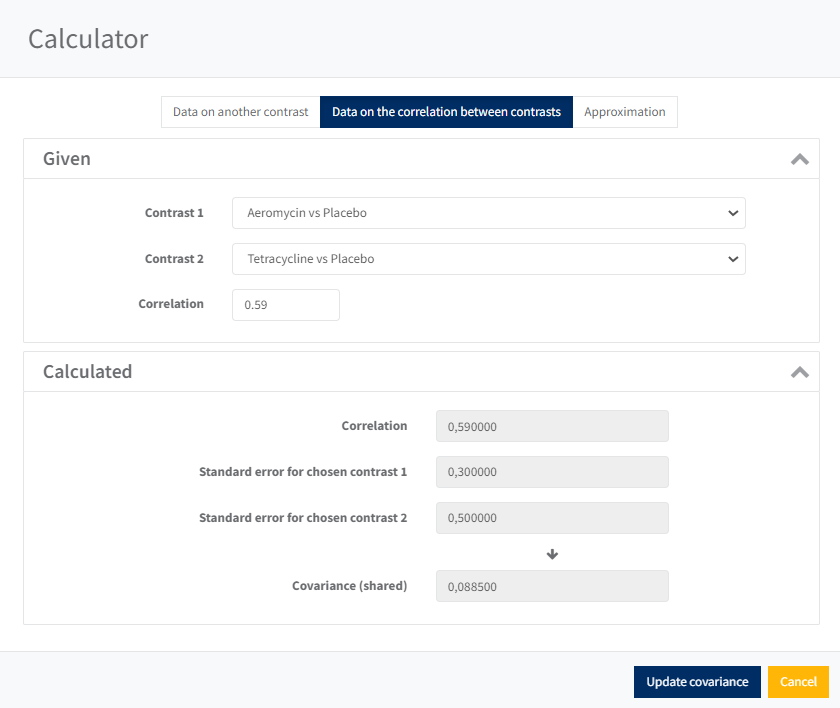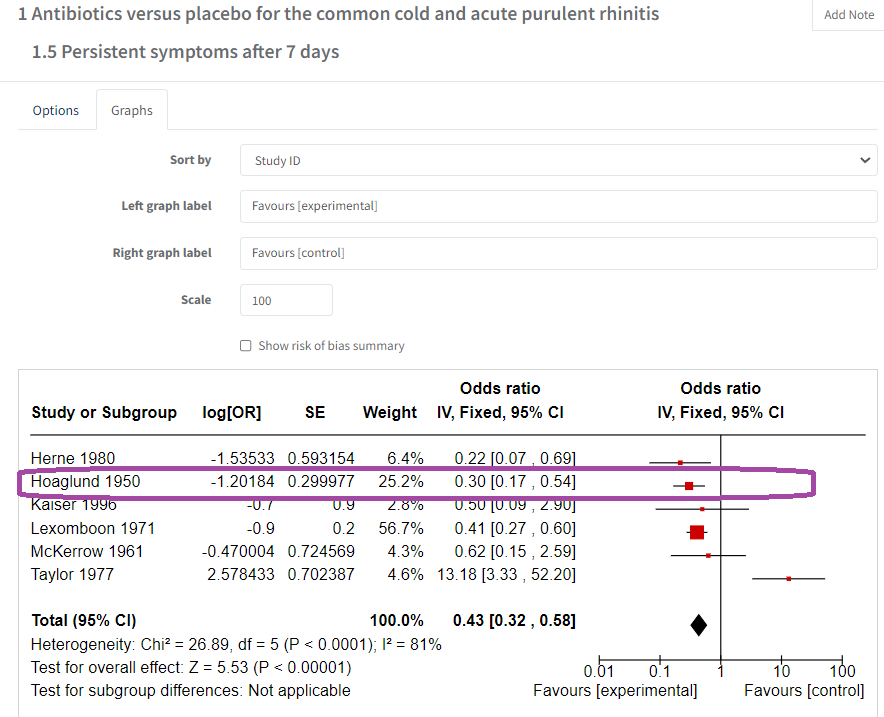Covariance calculator
How to use the covariance calculator
If your analysis should include results where RevMan needs to switch reference arms or combine arms for contrast-level data then you will need to enter a covariance for contrasts.
If you already have the covariance for the contrasts you can enter it directly. If you do not have the covariance the calculator can help you calculate it using three different methods depending on the information you have available.
Click on the calculator icon to open the covariance calculator.
Select a tab depending on what information is available: ‘Data on another contrast’, ‘Data on the correlation between the contrasts’ or if there is no additional data, and you can assume the variance within the arms of the study are similar, you can choose to use the ‘Approximation’.
Enter the data required to calculate a covariance according to the three options available.
Data on another contrast
Let’s assume you have the standard error for the contrast Aureomycin vs Tetracycline (SE: 0.5). Select the tab ‘Data on another contrast’, select the contrast and enter the standard error. Note that any information on this contrast that is enough to calculate the variance will also do.
Data on the correlation between contrasts
If we instead assume that you have data on the correlation between the contrast, you select the tab ‘Data on the correlation between the contrasts’, select the contrasts and enter the correlation. For this study select Contrast 1 Auremycin vs Placebo and Contrast 2 Tetracycline vs Placebo and the Correlation 0.59.
Approximation
If you do not have any additional data and you can assume that the variance within the arms of the study are similar, as a last resort you can use a method of approximation to calculate the Covariance.
For any of these options you will see that if the calculated covariance is not consistent with the standard errors given in the results table, you will be notified and you will not be able to update the Covariance.
When you have calculated the Covariance, click on ‘Update covariance’ to save the covariance with the result.
Now that you have added the Covariance you can go back to the analysis and check that the study result is calculated and included in the analysis for the study ‘Hoaglund 1950’.





